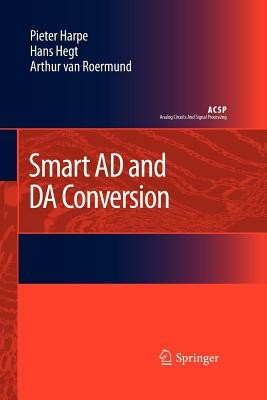
- We will send in 10–14 business days.
- Author: Pieter Harpe
- Publisher: Springer
- Year: 2012
- Pages: 167
- ISBN-10: 9400732570
- ISBN-13: 9789400732575
- Format: 15.6 x 23.4 x 1 cm, minkšti viršeliai
- Language: English
- SAVE -10% with code: EXTRA
Reviews
Description
The history of the application of semiconductors for controlling currents goes back all the way to 1926, in which Julius Lilienfeld led a patent for a "Method and apparatus for controlling electric currents" [1], which is considered the rst work on metal/semiconductor eld-effect transistors. More well-known is the work of William Shockley, John Bardeen and Walter Brattain in the 1940s [2, 3], after which the development of semiconductor devices commenced. In 1958, independent work from Jack Kilby and Robert Noyce ledto the invention of integrated circuits. A few milestones in IC design are the rst monolithic operational ampli er in 1963 (Fairchild?A702, Bob Widlar) and the rst o- chip 4-bit microprocessor in 1971 (Intel 4004). Ever since the start of the semiconductor history, integration plays an imp- tant role: starting from single devices, ICs with basic functions were developed (e. g. opamps, logic gates), followed by ICs that integrate larger parts of a s- tem (e. g. microprocessors, radio tuners, audio ampli ers). Following this trend of system integration, this eventually leads to the integration of analog and d- ital components in one chip, resulting in mixed-signal ICs: digital components are required because signal processing is preferably done in the digital - main; analog components are required because physical signals are analog by nature. Mixed-signal ICs are already widespread in many applications (e. g. - dio, video); for the future, it is expected that this trend will continue, leading to a larger scale of integration.
EXTRA 10 % discount with code: EXTRA
The promotion ends in 21d.05:32:11
The discount code is valid when purchasing from 10 €. Discounts do not stack.
- Author: Pieter Harpe
- Publisher: Springer
- Year: 2012
- Pages: 167
- ISBN-10: 9400732570
- ISBN-13: 9789400732575
- Format: 15.6 x 23.4 x 1 cm, minkšti viršeliai
- Language: English English
The history of the application of semiconductors for controlling currents goes back all the way to 1926, in which Julius Lilienfeld led a patent for a "Method and apparatus for controlling electric currents" [1], which is considered the rst work on metal/semiconductor eld-effect transistors. More well-known is the work of William Shockley, John Bardeen and Walter Brattain in the 1940s [2, 3], after which the development of semiconductor devices commenced. In 1958, independent work from Jack Kilby and Robert Noyce ledto the invention of integrated circuits. A few milestones in IC design are the rst monolithic operational ampli er in 1963 (Fairchild?A702, Bob Widlar) and the rst o- chip 4-bit microprocessor in 1971 (Intel 4004). Ever since the start of the semiconductor history, integration plays an imp- tant role: starting from single devices, ICs with basic functions were developed (e. g. opamps, logic gates), followed by ICs that integrate larger parts of a s- tem (e. g. microprocessors, radio tuners, audio ampli ers). Following this trend of system integration, this eventually leads to the integration of analog and d- ital components in one chip, resulting in mixed-signal ICs: digital components are required because signal processing is preferably done in the digital - main; analog components are required because physical signals are analog by nature. Mixed-signal ICs are already widespread in many applications (e. g. - dio, video); for the future, it is expected that this trend will continue, leading to a larger scale of integration.


Reviews